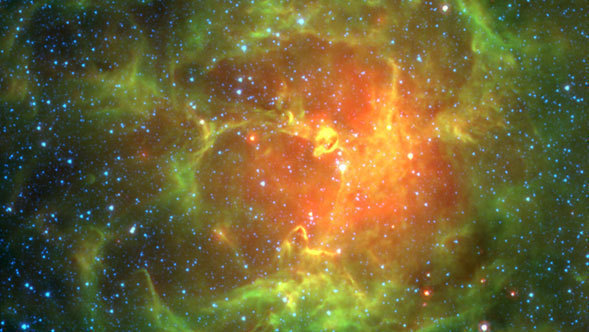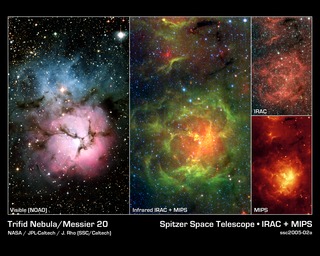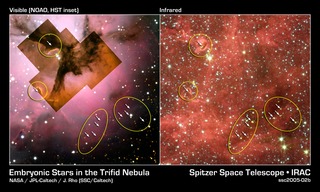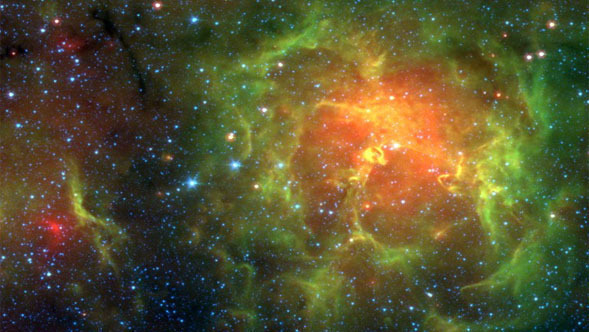Trifid's Shifting Sides
Science Animations Video • January 12th, 2005 • ssc2005-02v1
This movie shifts from the well-known visible-light picture of the glowing Trifid Nebula to infrared views from NASA's Spitzer Space Telescope. The Trifid Nebula is a giant star-forming cloud of gas and dust located 5,400 light-years away in the constellation Sagittarius.
The false-color Spitzer images reveal a different side of the Trifid Nebula. Where dark lanes of dust are visible trisecting the nebula in the visible-light picture, bright regions of star-forming activity are seen in the Spitzer pictures. All together, Spitzer uncovered 30 massive embryonic stars and 120 smaller newborn stars throughout the Trifid Nebula, in both its dark lanes and luminous clouds. These stars are visible in all the Spitzer images, mainly as yellow or red spots. Embryonic stars are developing stars about to burst into existence.
Ten of the 30 massive embryos discovered by Spitzer were found in four dark cores, or stellar "incubators," where stars are born. Astronomers using data from the Institute of Radioastronomy millimeter telescope in Spain had previously identified these cores but thought they were not quite ripe for stars. Spitzer's highly sensitive infrared eyes were able to penetrate all four cores to reveal rapidly growing embryos.
The movie begins with a visible-light image from the National Optical Astronomy Observatory, Tucson, Ariz., then shifts to a Spitzer picture from its infrared array camera. The next image is a combination of data from Spitzer's infrared array camera and its multiband imaging photometer. The final still is made up of data from only the multiband imaging photometer.
The Spitzer infrared array camera image is a three-color composite of invisible light, showing emissions from wavelengths of 3.6 microns (blue), 4.5 microns (green), 5.8 and 8.0 microns (red). The Spitzer mosaic image from the infrared array camera and multiband imaging photometer consists of light of 4.5 microns (blue), 8.0 microns (green) and 24 microns (red). The multiband imaging photometer image shows 24-micron emissions.
Video Credit: NASA/JPL-Caltech/R. Hurt (SSC/Caltech)







